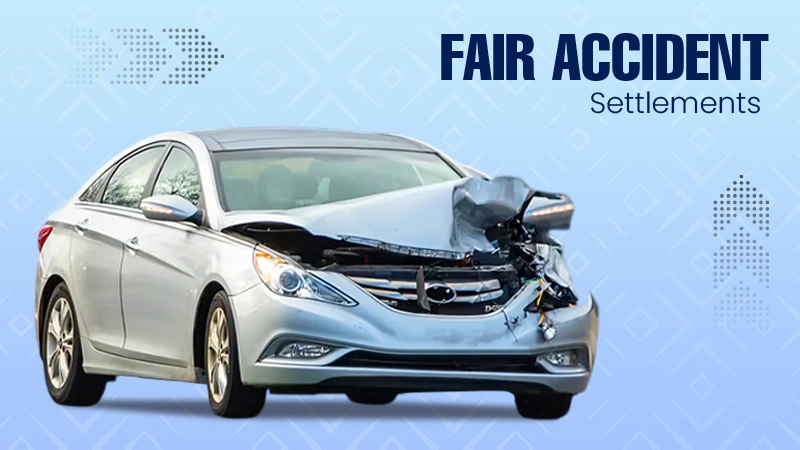
Introduction
Embarking on an international road trip offers adventure and freedom, but preparation is key to ensuring a smooth journey. One crucial aspect is understanding car hire excess insurance. Navigating the complexities of this insurance across borders can help protect against unforeseen expenses and provide peace of mind as you explore new territories. This guide delves into everything you need to know about car hire excess insurance in an international context, ensuring you’re well-prepared for your road adventures.
What is Car Hire Excess Insurance?
Breaking Down the Basics
Car hire excess insurance serves as a supplemental policy designed to cover the excess amount specified by rental companies in case of vehicle damage or theft. Typically, rental agreements include a deductible—often a substantial amount—that one must pay out-of-pocket before the rental company’s insurance kicks in. Car hire excess insurance effectively lowers or eliminates this deductible, protecting you from steep costs.
According to a study by CarInsuRent, a leading provider of car rental excess insurance, more than 60% of the claims were the result of the renters’ own negligence. Pre-existing damage that wasn’t properly marked at the time of rental, or even false claims made by rental firms after the vehicle was returned are pretty common. In 45% of the cases, the driver scratched the car while he parked the vehicle, and the average claim is for about US$ 623. This realization emphasizes how crucial it is to thoroughly record the state of the vehicle at both pickup and return in order to shield renters from unauthorized fees. It also emphasizes how crucial it is to have appropriate excess insurance for car rentals.
Understanding its basic operation, car hire excess insurance works by reimbursing you after you’ve paid the rental company for any damage. While it may seem like an additional expense, it provides financial security if an unexpected incident occurs.
This coverage is usually offered as a separate policy by specialized insurance providers and can be purchased online or sometimes directly with the rental company. It’s important to carefully read your rental agreement and understand the specific excess terms and conditions to ensure your policy provides adequate coverage.
Key Features and Benefits
Car hire excess insurance comes with several key features and benefits that can enhance your road trip experience by offering substantial peace of mind. First and foremost, it reduces financial risk by covering the excess portion of any claim, potentially saving you hundreds or even thousands in case of an incident. This can be particularly valuable in countries where the excess on rental cars is notoriously high, such as in Australia and certain parts of Europe, or when renting a luxury car.
An important feature is its flexibility in terms of purchase options. You can secure a policy daily or on an annual basis if you travel frequently, often at lower rates than those offered directly by rental companies.
Additionally, excess insurance typically extends to cover various types of damage, not only those caused by accidents but also windshield cracks, tire damage, and even the loss of keys. Many policies also offer broad geographic coverage, making them an excellent choice for international travelers crossing multiple borders.
The benefits don’t end there. Coverage can also include road assistance, towing, and even lock replacement services, ensuring you stay on the road even if the unexpected happens. However, be mindful of exclusions, like damage from off-road driving or negligence, which are common in many policies.
This insurance is best suited for those who want to navigate their travels without worry about unforeseen expenses. Whether you’re a casual vacationer or a business traveler, securing car hire excess insurance can ensure you remain financially protected while abroad.
Preparing for Your International Road Trip
Essential Documents to Carry
When setting off on an international road trip, ensuring you have the right documents can make a world of difference. Start with your primary identification documents: a valid passport and international driving permit (IDP), which some countries require alongside your national driver’s license. An IDP can help bridge language gaps and verify your right to drive overseas.
Always carry a copy of your car hire reservation details, including the rental agreement. This document will outline all terms, conditions, and the services you’ve agreed upon. Keep a hard copy in your glove compartment and a digital version on your smartphone for convenience.
Ensure you have proof of insurance as well. This includes both the car hire excess policy and any additional coverage you might opt for, like personal liability insurance. These documents will be critical if you’re asked to provide proof in case of any mishap.
Don’t forget any visa documentation required for the countries you’ll be visiting or passing through. Being prepared with all necessary permissions can prevent potential issues at borders or checkpoints. As a final precaution, keep emergency contact numbers for roadside assistance and local authorities handy, just in case you need them quickly.
Having these essential documents organized and accessible not only streamlines your trip but also prevents delays or legal complications. Packing a travel itinerary with key stops, accommodations, and points of interest is also helpful. This, paired with maps or a GPS device, ensures you’re never lost, even in the most remote areas.
Understanding Border Crossing Rules
Crossing borders by car can be intricate due to varying rules and regulations that differ from country to country. Before setting off, research the entry requirements for each country you’ll visit, including visa policies and customs regulations. Some countries have specific restrictions on what can be brought across borders, including certain foods or plants, so familiarize yourself with these to avoid fines or confiscations.
A crucial aspect of border crossings involves your rental car. Verify with your rental company that cross-border travel is permitted under your agreement, as some companies have restrictions on vehicles leaving the country of rental. Ensure your car hire excess insurance covers all the countries you plan to enter.
Each border might have different queues and procedures. Some may require you to report to customs, offer potential inspections, or review all vehicle documentation, such as registration and insurance papers. It’s beneficial to know whether tolls or vignette stickers are necessary for driving on highways in different regions, as these can affect both your planning and budget.
To streamline the process, have all documents ready and organized for inspection. Familiarize yourself with local traffic laws as well, since speed limits, road signs, and driving customs can vary widely. Understanding these border crossing rules and preparing in advance will ensure your international road trip remains hassle-free and enjoyable, allowing you to focus on the journey rather than the paperwork.
Navigating Excess Insurance Across Different Countries
Europe: Diverse Regulations and Requirements
Navigating car hire excess insurance in Europe requires an understanding of its diverse regulations and country-specific requirements. European countries have varying insurance standards, particularly concerning excess amounts and coverage scopes. For instance, Germany often has lower excess fees, whereas in Italy, they might be significantly higher, making excess insurance a practical choice for travelers.
One of the complexities in Europe is the need for a European Green Card that confirms your vehicle is insured. While not always necessary within EU countries, it remains a requirement in countries like Bosnia or Montenegro. For those renting cars, the rental company usually provides this, but confirming its availability can save you from any last-minute surprises.
Insurance coverage might also need to factor in specifics like winterization in Northern regions, where laws require winter tires or snow chains. Some countries, like Switzerland, have mandatory road tolls or vignettes, which might not be covered under standard rental agreements or insurance.
Additional fees for border crossings can exist, making it pivotal to verify with your rental provider the included territories. Some might charge extra or outright prohibit crossing into certain countries like Eastern Europe or non-Schengen zone regions.
Being aware of Europe’s varied driving norms is also essential—such as considering the left-side driving in the UK or stricter speed regulations in France. Understanding these differences, along with insurance intricacies, can significantly enhance your travel experience across the continent, ensuring your journey is both legally compliant and smooth.
North America: Cross-Border Travel Insights
Traveling across North America’s borders, particularly between the United States and Canada, generally involves fewer complexities compared to European transitions, yet it presents its own set of rules and considerations. First, confirm that your rental agreement allows for cross-border travel. Many rental companies permit unfettered movement between the U.S. and Canada, but always verify if additional insurance or fees apply.
While crossing into Mexico presents more challenges, most rental companies require special extensions or separate insurance due to different regulatory and safety landscapes. Make sure your policy covers the necessary territories.
It’s also important to understand the differences in traffic laws, even on shared roads between countries. For example, speed limits might vary and are posted in miles per hour in the U.S. versus kilometers per hour in Canada.
When it comes to documentation, a valid passport or enhanced driver’s license is essential at border checkpoints. These crossings are typically efficient, but having all documents, such as rental agreements and insurance certificates, on hand will speed up the process.
Planning for fuel variations is wise, too, as fuel prices and types can differ significantly between the countries. For a seamless experience, it’s beneficial to research and respect the unique cultural and regulatory environments you’ll encounter. This preparation ensures a hassle-free and enjoyable journey across North America’s breathtaking landscapes.
Australia and New Zealand: Unique Considerations
Traveling between Australia and New Zealand by car involves unique considerations, primarily due to the fact that a direct drive isn’t possible; travel between the two requires a ferry or flight. However, understanding car hire excess insurance is crucial if you plan to rent a vehicle in either country.
In Australia, excess insurance is highly recommended due to potentially high excess fees for damages. Additionally, many travelers opt for policies that cover common outback hazards, such as kangaroo collisions or windscreen damage from gravel roads.
For New Zealand, driving can be more challenging due to the rugged terrain and ever-changing weather conditions, especially in mountainous regions. Car hire excess insurance is valuable here as well, protecting against potential damage from landslides or unexpected weather-related incidents.
When renting a car, always check that your insurance covers driving on unsealed roads, as both countries boast picturesque but remote routes that can be tempting to explore. The importance of carrying the right documents, such as a valid driver’s license and proof of insurance, cannot be overstated when embarking on a journey across these vibrant landscapes.
Given the left-side driving rules common to both regions, familiarize yourself with local road signs and regulations before hitting the roads. Preparing appropriately ensures your adventure in Australia and New Zealand is as smooth as the breathtaking views you’ll encounter along the way. This careful planning allows you to focus on enjoying the diverse wildlife, expansive coastlines, and scenic drives that these countries uniquely offer.
Securing the Right Excess Coverage
Comparing Local and International Providers
When selecting car hire excess insurance, understanding the differences between local and international providers can help you make a cost-effective and well-informed choice. Local providers often specialize in tailored policies that align closely with the country’s specific rental car regulations and typical road conditions. They might offer coverage unique to local hazards, such as storm damage in tropical regions or coverage for specific wildlife collisions in Australia.
On the other hand, international providers, such as CarInsuRent, can offer the convenience of a unified policy that covers multiple countries if you plan to travel extensively. These policies often offer a streamlined experience with coverage terms standardized across borders, making them ideal for multi-country trips. They also tend to be competitive in pricing due to their wide range of operations, sometimes offering discounts for online bookings or annual policies.
While international providers offer breadth, local insurers might be more flexible in handling claims on the ground and can sometimes better accommodate language differences, providing more accessible customer service during your travels.
Deciding between these options ultimately depends on your travel itinerary and comfort with dealing with providers.
Cost-Effective Coverage Options
Securing cost-effective coverage without compromising on protection is essential for any international road trip. One of the first steps is to compare different providers—both local and international—to find competitive rates. Many travelers find that purchasing car hire excess insurance independently, rather than through the rental company, can result in significant savings.
CarInsuRent, for example, offer policies that cover a broad range of potential incidents, such as theft, damages, and personal liability, while still fitting within your budget. They also offer annual multi-trip policies if you travel frequently. This option offers the best value per trip compared to single-use coverage.
Discount deals and promotions can further reduce costs. Some providers offer discounted rates for online purchases or early bookings. Additionally, bundling your car hire excess insurance with other travel insurance products can sometimes lower the overall cost, providing comprehensive protection.
Reading customer reviews can shed light on the reliability and efficiency of the claims process, ensuring that an economical choice doesn’t compromise on service quality.
Ultimately, the right cost-effective insurance is about balancing affordability with adequate protection, giving you peace of mind without breaking the bank.
Common Challenges and How to Avoid Them
Unexpected Fees and Charges
Unexpected fees and charges can quickly turn your road trip into a costly affair if you’re not well-prepared. One common surprise is the additional fee for adding a second driver to your rental agreement. Many travelers mistakenly assume this service is included, but rental companies often charge extra, so it’s crucial to ask about this ahead of time.
Another potential hidden cost involves fuel policies. Some rental companies require you to return the vehicle with a full tank; failing to do so could result in inflated fuel charges. To avoid this, verify and adhere to the fuel policy outlined in your rental agreement.
Extra charges can also sneak in through insurance policies. Sometimes, rental companies automatically add their excess insurance without explicit consent. Make sure to read the contract carefully and decline any unnecessary add-ons if you’ve already secured independent coverage.
Additionally, returning a vehicle to a different location than where it was picked up is often more expensive due to drop-off fees. Planning routes that allow for vehicle return at the same location can save a significant amount.
Lastly, administrative fees for processing tolls or traffic fines can add up. Consider carrying cash for tolls or setting up a prepaid electronic toll pass if available.
By being aware of these potential fees and charges, and taking proactive measures, you can keep your travel budget on track and enjoy your international road trip without unwelcome financial surprises. A little foresight goes a long way in safeguarding against these costs.
Communication Breakdowns at Rental Counters
Communication breakdowns at rental counters can be a frustrating start to your journey. They often arise from language barriers or misunderstandings about rental terms. Make efforts to clarify any points you are unsure about, especially when changing plans affect your insurance coverage or fees. Using translation apps can help bridge language gaps, ensuring both parties fully understand the agreement.
Miscommunications frequently occur regarding insurance options. Rental agents may propose additional coverages or upgrades; it’s essential to clearly state your needs and decline any unnecessary additions if you’ve already arranged for external insurance. Politely confirming everything in writing can prevent future disputes.
To minimize these breakdowns, prepare thoroughly before reaching the rental counter and don’t hesitate to ask questions until all terms are transparent. This preparation can transform the rental process into a seamless experience, enabling you to start your road trip with confidence and clarity. Proper communication can make the difference between a stress-free journey and one fraught with unnecessary complications, ensuring that you spend more time enjoying the road and less time dealing with paperwork.








